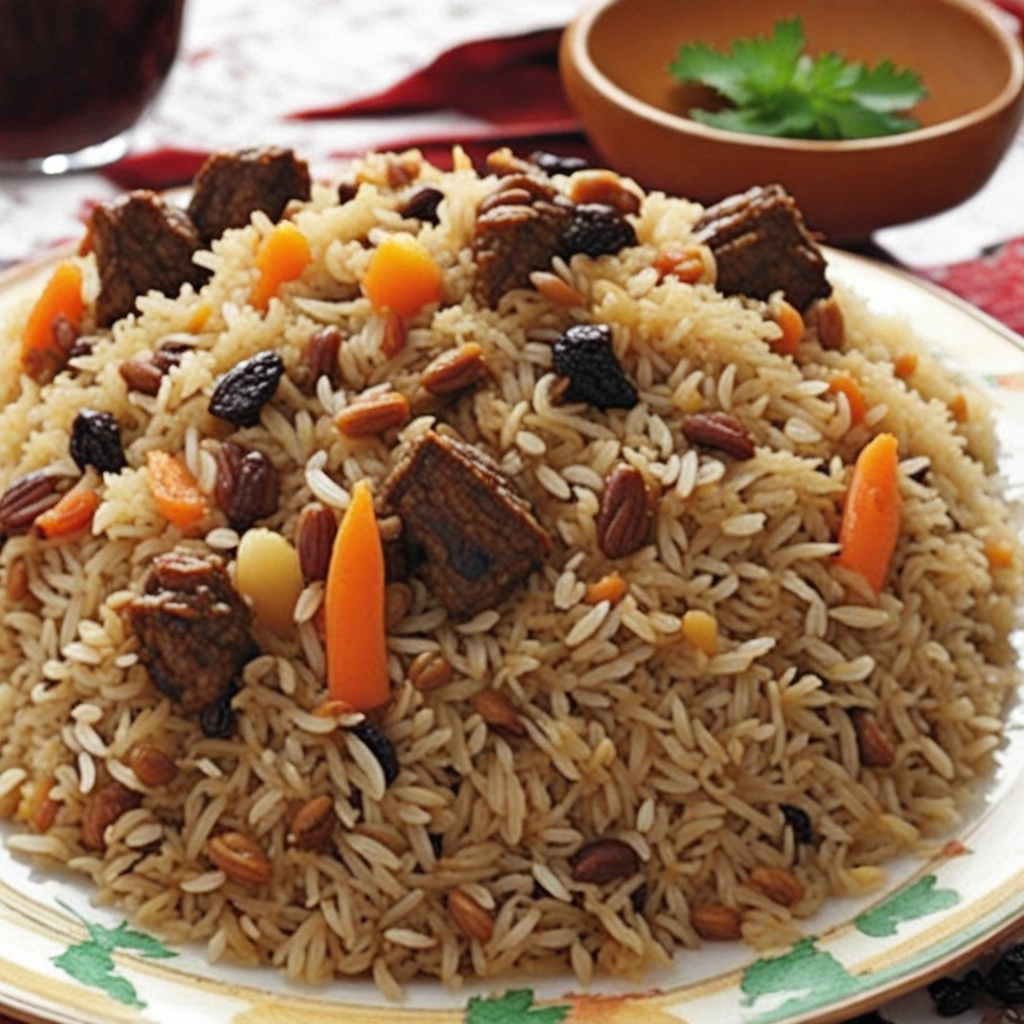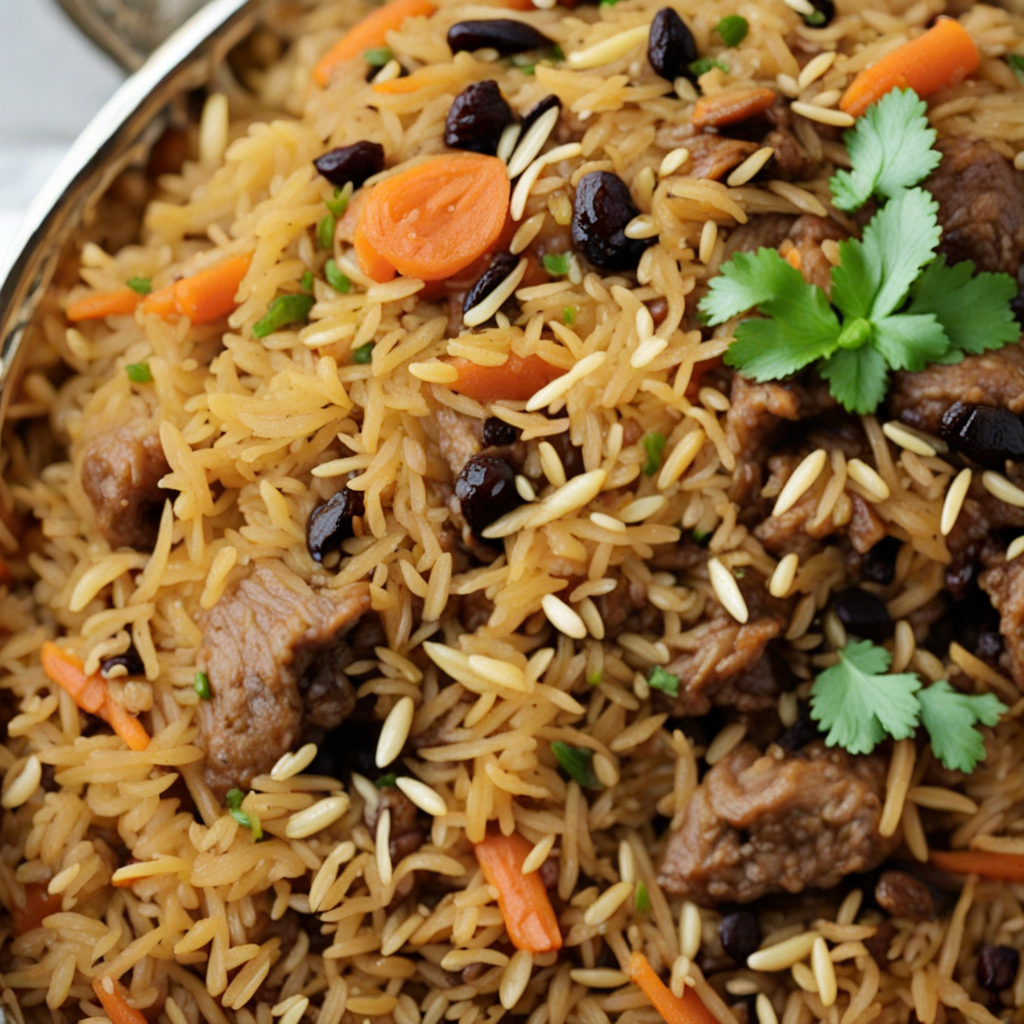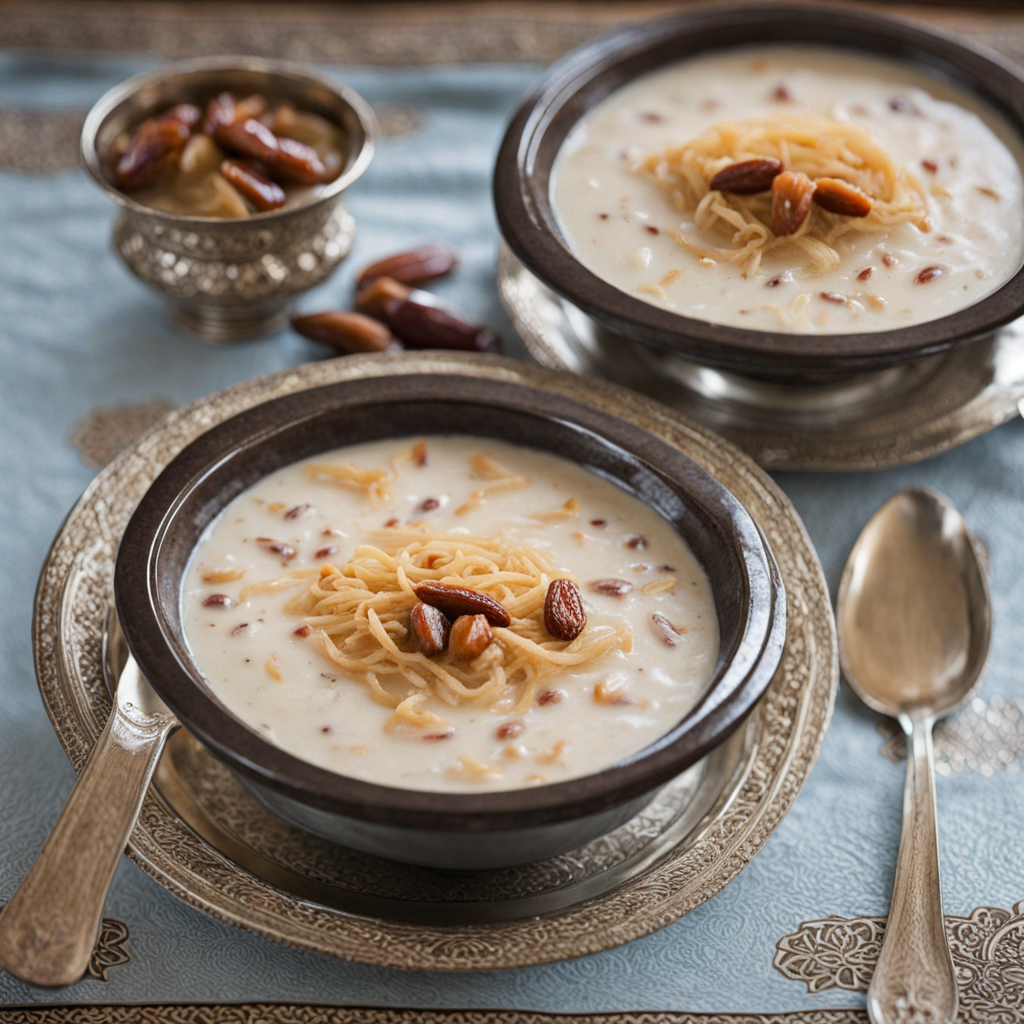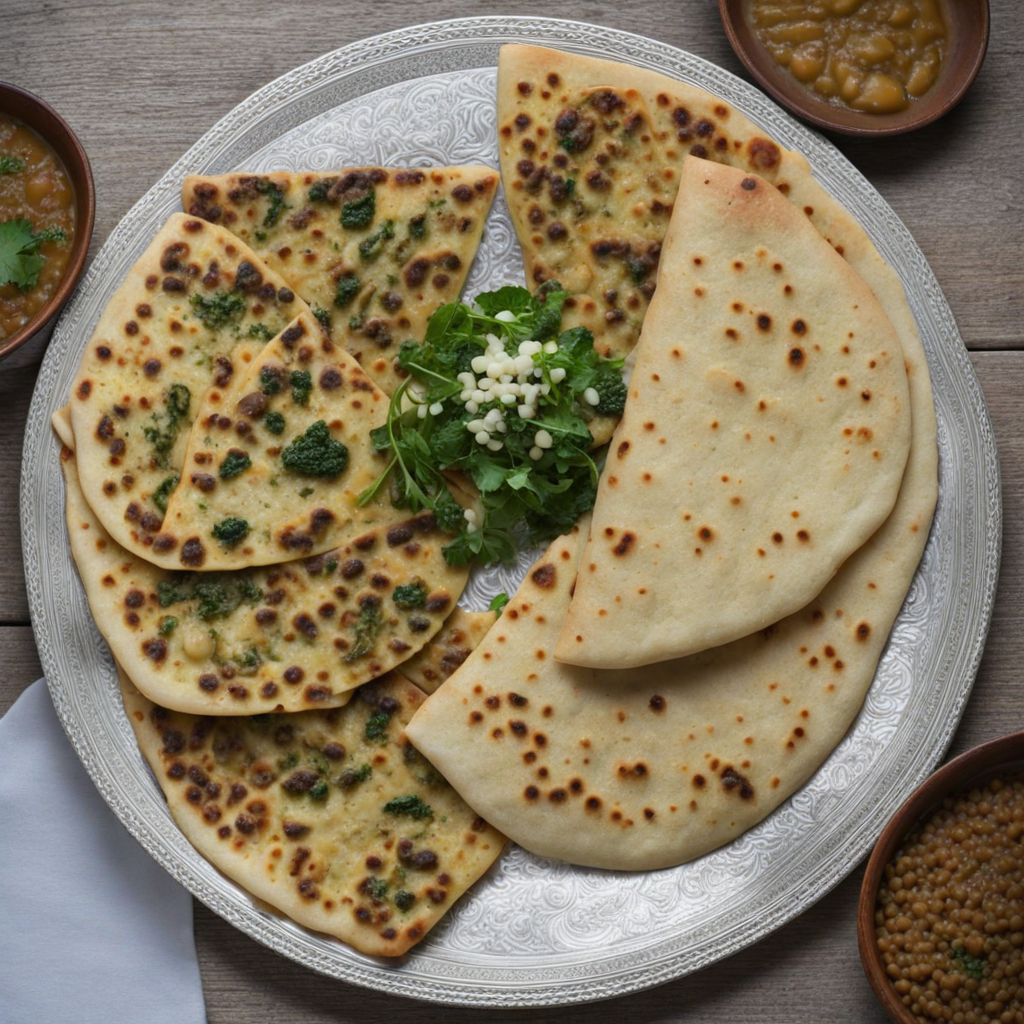Kabuli Pulao
Kabuli Pulao is a fragrant and flavorful Afghan rice dish that beautifully marries the essence of spices, textures, and colors. At its heart lies long-grain basmati rice, renowned for its delicate aroma and fluffy texture. The rice is cooked to perfection, often layered with tender chunks of marinated lamb or chicken, which infuse the grains with rich, meaty flavors. The dish is typically seasoned with a blend of spices such as cumin, cardamom, and cinnamon, creating a warm and inviting aroma that tantalizes the senses. What sets Kabuli Pulao apart is its vibrant assortment of toppings, which adds a delightful crunch and sweetness to each bite. Golden raisins and slivered carrots are often sautéed in ghee, lending a subtle sweetness that contrasts beautifully with the savory meat and spices. Additionally, you may find toasted almonds or pistachios sprinkled on top, providing a nutty crunch that enhances the overall experience. The dish is often garnished with fresh herbs, adding a hint of brightness and freshness to the rich flavors. Served as a centerpiece for special occasions and gatherings, Kabuli Pulao is not just a meal; it's a celebration of Afghan culture and hospitality. Traditionally, it is accompanied by a side of yogurt or a fresh salad, which balances the richness of the rice. With each mouthful, you embark on a culinary journey that showcases the history and traditions of Afghanistan, making it an unforgettable dish for anyone looking to explore new and exciting flavors.
How It Became This Dish
Origin of Qabili Pulo Qabili Pulo, also known as Qabili Pulao, is a traditional Afghan dish that has its roots deeply embedded in the rich culinary tapestry of Afghanistan. The name itself derives from the Persian word "polo," which means rice, and "qabili," which implies "to be able" or "capable." This dish is a testament to the historical interplay of various cultures and ethnicities in the region, particularly the influences from Persian, Indian, and Central Asian cuisines. The origins of Qabili Pulo can be traced back to the time of the ancient Silk Road, where merchants and travelers exchanged not only goods but also culinary practices. As Afghanistan was a pivotal junction on this trade route, it absorbed numerous influences, leading to the development of its unique dishes. The use of rice, a staple in Afghan cuisine, combined with spices, meats, and vegetables, reflects the agricultural bounty of the region and its long-standing tradition of hospitality. \n\n Cultural Significance Qabili Pulo is more than just a meal; it plays a vital role in Afghan culture and social gatherings. Traditionally, it is served during festive occasions such as weddings, religious holidays, and family celebrations. The dish embodies the values of generosity and communal sharing, as it is often served in large quantities to accommodate many guests. The preparation of Qabili Pulo is a communal effort, bringing families and friends together, reinforcing social bonds through the act of cooking and sharing food. In Afghanistan, food is a central part of identity, with each region boasting its variations. Qabili Pulo is particularly significant in Kabul, where it is often regarded as the national dish. The way it is prepared and served can vary from family to family, with some adding raisins, carrots, and nuts for added flavor and texture. This adaptability not only showcases the creativity of Afghan cooks but also highlights the importance of family traditions in preserving culinary heritage. \n\n Ingredients and Preparation The classic Qabili Pulo consists of several key ingredients: basmati rice, lamb or chicken, carrots, raisins, and a variety of spices such as cumin, cardamom, and cinnamon. The rice is typically cooked separately and then layered with the meat and vegetables in a pot, allowing the flavors to meld together. The dish is often garnished with fried onions and slivers of almonds or pistachios, adding a delightful crunch to the soft and aromatic rice. One of the most critical aspects of preparing Qabili Pulo is the technique used to cook the rice. Afghan cooks often employ a method called "dam," where the rice is steamed rather than boiled, resulting in fluffy and perfectly cooked grains. The meat is usually marinated with spices, then slow-cooked to enhance its tenderness and flavor. This meticulous preparation reflects the importance of cooking as an art form in Afghan culture, where the process is just as meaningful as the final product. \n\n Regional Variations While Qabili Pulo is widely recognized as a staple in Afghan cuisine, regional variations abound, each bringing its unique twist to the dish. In Herat, for instance, cooks may add saffron for a more aromatic flavor and a vibrant yellow hue to the rice. Meanwhile, in the northern provinces, you might find the dish featuring a greater emphasis on nuts and dried fruits, reflecting the agricultural diversity of the region. The adaptation of Qabili Pulo to local tastes also speaks to the resilience and creativity of Afghan cuisine in the face of historical challenges. Over the years, Afghanistan has experienced significant upheaval, including invasions and internal conflicts. Despite these adversities, the Afghan people have preserved their culinary traditions, and Qabili Pulo remains a cherished dish that evokes a sense of nostalgia and cultural pride. \n\n Modern-Day Popularity In recent years, Qabili Pulo has gained popularity beyond Afghanistan, particularly in diaspora communities around the world. Afghan restaurants in cities such as London, Washington D.C., and Melbourne have introduced this iconic dish to a broader audience, often adapting it to suit contemporary palates while maintaining its traditional essence. The rise of social media has further helped elevate the profile of Afghan cuisine, with food enthusiasts sharing recipes and experiences related to Qabili Pulo. Moreover, the dish has become a symbol of Afghan identity and resilience. For many Afghans living abroad, preparing and sharing Qabili Pulo is a way to connect with their heritage and maintain a sense of cultural continuity. It serves as a reminder of home and the warmth of family gatherings, offering comfort amidst the challenges of displacement. \n\n Conclusion: A Culinary Legacy Qabili Pulo is not just a dish; it is a narrative woven into the fabric of Afghan culture and history. Its origins reflect the confluence of diverse culinary influences, while its preparation and presentation highlight the values of community, hospitality, and tradition. Whether enjoyed at a festive gathering or a family meal, Qabili Pulo stands as a testament to the enduring legacy of Afghan cuisine, transcending borders and time to bring people together through the universal language of food. As the world becomes increasingly interconnected, Qabili Pulo serves as a reminder of the importance of preserving culinary traditions while embracing innovation. The dish continues to evolve, yet its heart remains steadfastly rooted in the rich history and vibrant culture of Afghanistan, inviting all to share in its flavorful journey.
You may like
Discover local flavors from Afghanistan







